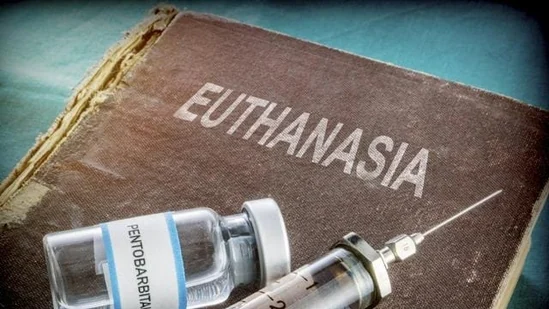Context:
The Supreme Court will hear the NGO All Creatures Great and Small’s (ACGAS), plea for passive euthanasia for rabies patients.
About Euthanasia
- Definition: The act of ending the life of a person suffering from a painful, incurable disease or physical disorder, either by directly causing death or withholding treatment.
- Legal Status: Euthanasia is not specifically addressed in most legal systems and is often considered suicide (if done by the patient) or murder (if done by someone else).
- Physician’s Role: Doctors may lawfully stop prolonging life in cases of extreme suffering and can administer pain-relieving drugs, even if they shorten life.
Types of Euthanasia
- Active euthanasia: Active euthanasia occurs when medical professionals, or another person, deliberately do something that causes the patient to die.
- Passive euthanasia: Passive euthanasia occurs when the patient dies because the medical professionals either don’t do something necessary to keep the patient alive or when they stop doing something that is keeping the patient alive.
- switch off life-support machines
- disconnect a feeding tube
- don’t carry out a life-extending operation
- don’t give life-extending drugs
- Voluntary Euthanasia: Voluntary euthanasia is a type of euthanasia that is carried out at the patient’s request.
- Non-voluntary Euthanasia: Non-voluntary Euthanasia is conducted when the patient is unable to consent, often in cases involving individuals in a vegetative state.
Legal Status of Euthanasia in India:
- The Supreme Court has allowed passive euthanasia, permitting patients to make a ‘living will’ to withdraw medical support if they fall into an irreversible coma. This means patients can choose to stop life support if they don’t wish to continue living in such a state.
- The Court stated that the guidelines for this decision will remain until a law is made on the matter. While there were different opinions from the judges, they all agreed that a ‘living will’ should be allowed to prevent prolonged suffering in a coma if a person does not want to live.
- In 2011, the Court recognized passive euthanasia in the Aruna Shanbaug case, allowing the removal of life-sustaining treatment for patients unable to make informed decisions.

